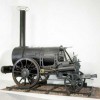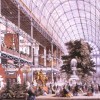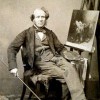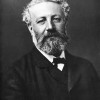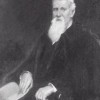Industrialization in Britain
Created by Nicola Minott-Ahl on Fri, 01/08/2021 - 12:32
Part of Group:
Test
Timeline
Chronological table
| Date | Event | Created by | Associated Places | |
|---|---|---|---|---|
| 15 Sep 1830 |
Opening of Liverpool & Manchester Railway
Articles
|
Dave Rettenmaier | ||
| 10 Jan 1840 |
launch of UK Penny PostThe introduction of the Penny Post in 1840, the rapid expansion of the rail network in the UK, and the introduction of steamships on the transatlantic routes, created the optimum conditions for writing letters. Prior to 1840, the cost of inland postage was prohibitively expensive; it was calculated according to the number of sheets multiplied by the distance traveled. Additional charges were often levied and the burden of payment fell on the recipient, which did nothing to encourage frequent communication. The Penny Post Act drastically reduced the cost of an inland letter to a universal flat rate of just one penny for a half an ounce, and the introduction of the prepaid penny stamp removed the deterrent to accepting a letter. Articles |
Dave Rettenmaier | ||
| 1 May 1851 to 15 Oct 1851 |
Great Exhibition
The Great Exhibition of 1851 was an event in the history of: exhibitions; world’s fairs; consumerism; imperialism; architecture; collections; things; glass and material culture in general; visual culture; attention and inattention; distraction. Its ostensible purposes, as stated by the organizing commission and various promoters, most notably Prince Albert, were chiefly to celebrate the industry and ingeniousness of various world cultures, primarily the British, and to inform and educate the public about the achievement, workmanship, science and industry that produced the numerous and multifarious objects and technologies on display. Designed by Joseph Paxton, the Crystal Palace (pictured above) was a structure of iron and glass conceptually derived from greenhouses and railway stations, but also resembling the shopping arcades of Paris and London. The Great Exhibition of the Works of Industry of All Nations became a model for World’s Fairs, by which invited nations showcased the best in manufacturing, design, and art, well into the twentieth century. ArticlesAudrey Jaffe, "On the Great Exhibition" Related ArticlesAviva Briefel, "On the 1886 Colonial and Indian Exhibition" Anne Helmreich, “On the Opening of the Crystal Palace at Sydenham, 1854″ Anne Clendinning, “On The British Empire Exhibition, 1924-25″ Barbara Leckie, “Prince Albert’s Exhibition Model Dwellings” Carol Senf, “‘The Fiddler of the Reels’: Hardy’s Reflection on the Past” |
Dave Rettenmaier | ||
| 19 Apr 1862 |
Railway Station exhibited
ArticlesPamela Fletcher, "On the Rise of the Commercial Art Gallery in London" |
Dave Rettenmaier | ||
| 25 Aug 1862 |
Victoria Station openedOn 25 August 1862, London Victoria Station was opened, connecting London to the Kent coast. Related ArticlesPaul Fyfe, “On the Opening of the Liverpool and Manchester Railway, 1830″ Nancy Rose Marshall, “On William Powell Frith’s Railway Station, April 1862″ |
Dave Rettenmaier | ||
| 6 Nov 1872 to 22 Dec 1872 |
Around the World in Eighty Days Related Articles |
Dave Rettenmaier | ||
| Sep 1873 |
Financial panic of 1873 begins
Related Articles |
Dave Rettenmaier |

